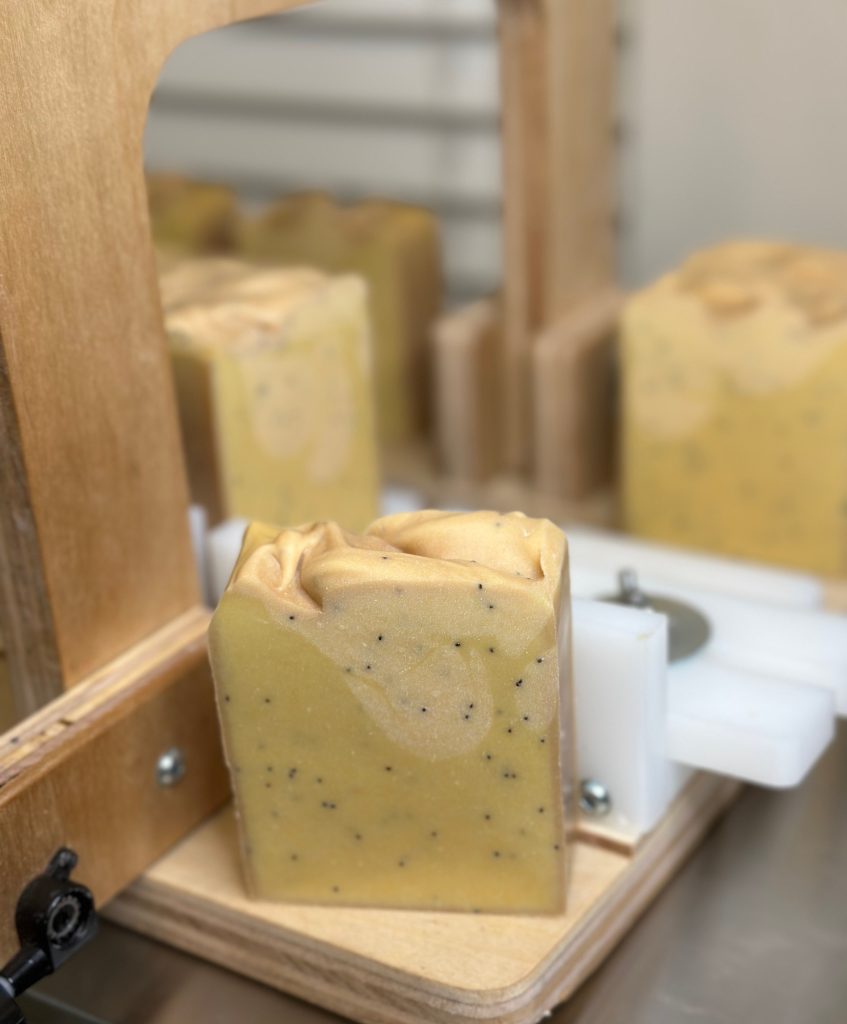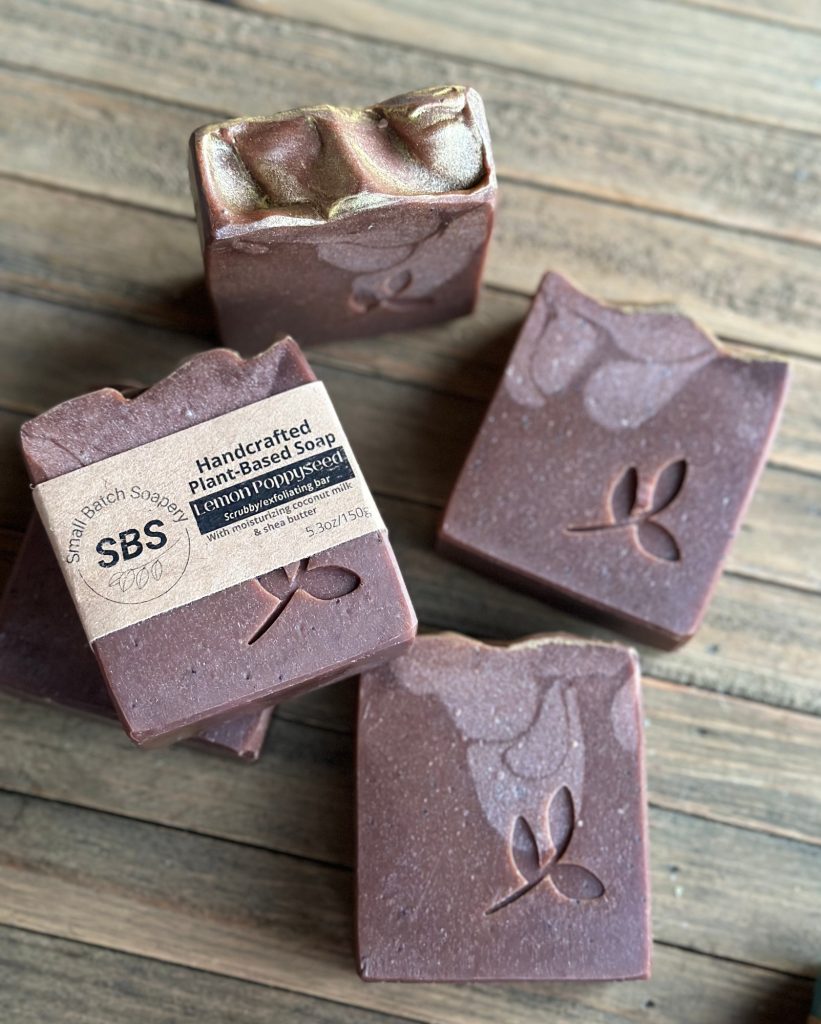Many fragrance oils, especially the sweeter-smelling ones, contain vanillin. Vanillin is a natural organic compound that is found in vanilla beans, and it is also commonly used as a fragrance ingredient in many fragrance oils. When vanillin is added to cold-process soap, it can cause the soap to turn brown over time.
The brown coloration is due to the chemical reaction between vanillin and the lye (sodium hydroxide) in the soap, a process known as oxidation. This reaction is often accelerated by exposure to air and light, heat, and humidity.
This oxidation process is purely cosmetic and does not affect the quality or performance of the soap – it’s just another challenge for the soap maker to try to work with or overcome in the ultimate design of the soap and the overall cosmetic appeal of the bar.
Some tricks used to minimize discoloration are to only add fragrance to certain portions of the soap batter, to utilize neons to attempt to maintain some faint color, use titanium dioxide (whitens/lightens), or sometimes to paint the top of the soap with mica to add a bit of extra color for visual appeal.


